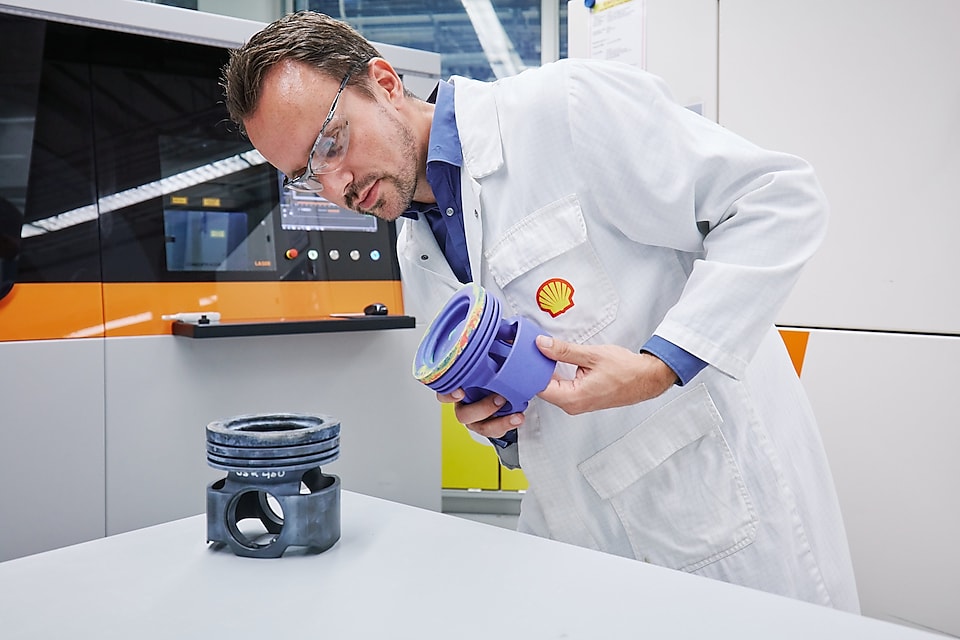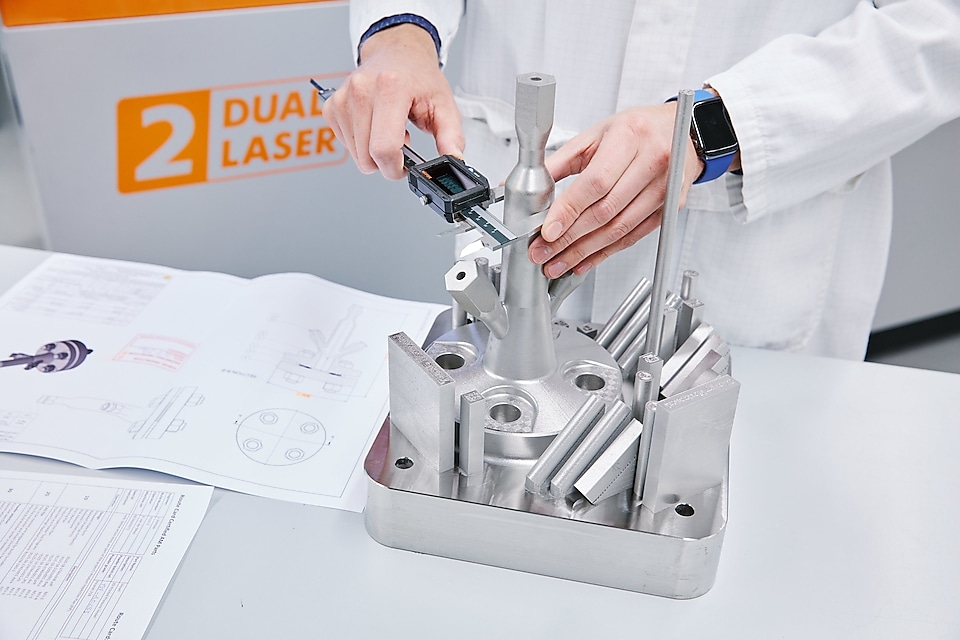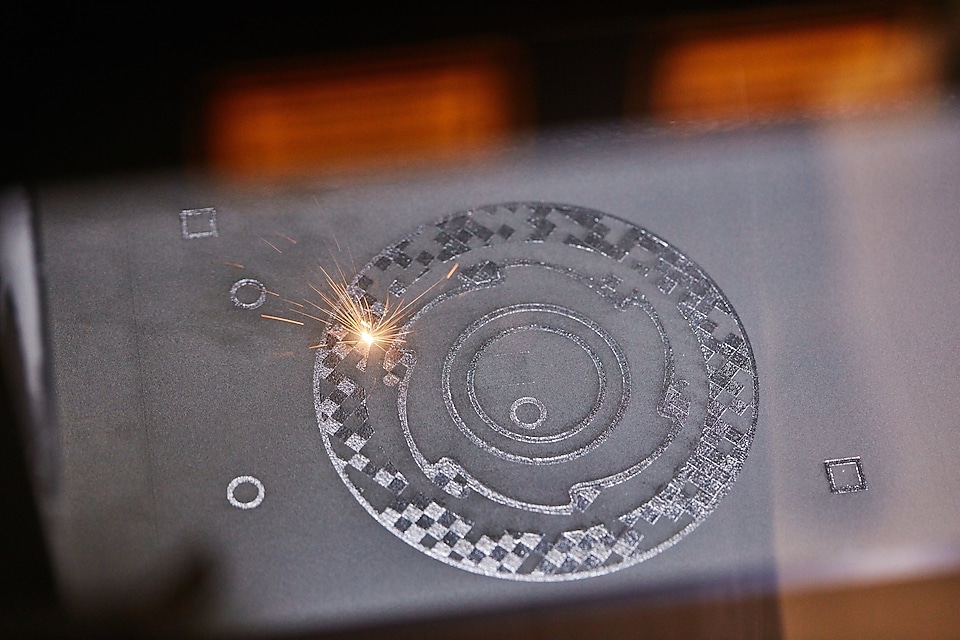Oil and gas giant Royal Dutch Shell has been leveraging 3D printing for design prototyping and tooling for some time, and is now turning its attention to additively manufacturing spare parts.
Using metal Powder Bed Fusion (PBF) technologies, the company is 3D printing spare parts for hard-to-reach areas such as its offshore platforms. Moving to a digital supply chain will enable Shell to address issues surrounding local supply, obsolescence, and implement just-in-time inventory.

Shell’s global AM projects
Shell began its 3D printing operations in 2011 with an in-house metal laser PBF system to produce custom laboratory testing apparatus at its Technology Centre Amsterdam (STCA). The firm now has more than 15 3D printers at its centers in Amsterdam and Bangalore.
In August last year, Shell announced a four year pilot project at its Singapore refinery to trial digital twin technology. Expected to boost productivity while improving reliability and safety, the system is expected to be fully implemented in 2024 and will serve as a complete virtual representation of the refinery and its processes, with 3D models aiding visualization.
Over the past year, Shell has increased its reliance on 3D printing and digital part management, having embarked upon several recent global additive manufacturing projects in the energy sector. The company used 3D printing to achieve significant cost reductions in its offshore operations around Nigeria, repairing a small conventionally manufactured polymer seal cover on a large mooring buoy. The part was scanned to produce a digital model which was sent off to a 3D printing service provider and delivered in just two weeks, cutting manufacturing costs by 90 percent.
Shell has also partnered with energy firm Baker Hughes to 3D print spare parts at its Pernis refinery in the Netherlands. Baker Hughes 3D printed a set of impellers for a critical seven-stage centrifugal pump which could pave the way for delivery time reductions of around 75 percent. Using 3D printing to produce the components on demand would mean Shell would not have to physically store any of the components produced.

Offshore spare parts production
Managing spare parts is a major logistical challenge for large energy companies like Shell, who have to balance producing too few parts and risk supply shortages, or manufacturing too many and having not enough physical space to store them, leading to waste. Additionally, some of Shell’s assets are reaching end-of-life as a result of major components becoming obsolete and no longer being manufactured
To address these challenges, Shell is using its in-house 3D printing capabilities to scan and reverse engineer some of these components at the STCA to expand the life of its assets and reduce cost and lead times for parts.
In 2019, the STCA was awarded a best practice qualification for its PBF 3D printing facility from independent assessment company Lloyd’s Register. The qualification resulted from an audit of Shell’s systems and procedures including personnel competencies, rules and regulation compliance and materials handling.
Following the certification, Shell is currently developing a pressure vessel using 3D printing which, once complete, is reportedly going to be a global first. The company is compiling a database of digital passports to confirm the suitability of 3D printed spare part designs, which will enable Shell to produce technically assured, certified and on-demand additively manufactured spare parts.
By utilizing 3D printing, Shell will further its goal of reducing physical stock and waste in its supply chain, and also reduce cost and lead times for parts.

Spare parts 3D printing
Offering on-demand 3D printing as a service could bolster supply chain resilience in the future, with digital spare part inventories helping to reduce the need for large-scale storage of parts, and subsequently warehousing and logistical costs. Much like Shell, several other companies in the heavy industrial sectors are turning to 3D printing and digital part storage for their spare part needs.
In April 2020, the Indian Navy partnered with 3D printing service bureau think3D to help produce spare parts on-demand using additive manufacturing, for both on and off-shore scenarios. Later that year, Brazilian petrochemical company Braskem adopted French 3D software start-up Spare Parts 3D’s (SP3D’s) DigiPart program to help optimize its inventory supply chain.
Elsewhere, in Singapore’s maritime sector, digital part storage specialist Ivaldi Group recently took on the role of project manager in a Phase II Joint Industry Program (JIP) to advance spare part 3D printing. The JIP aims to achieve these goals, bringing together 14 key industry players to 3D print, certify, and install end-use parts onboard vessels in the region. Meanwhile, German engineering conglomerate thyssenkrupp has formally entered into a joint venture with Wilhelmsen Ships Services, one of the world’s largest maritime service providers, to deliver 3D printed maritime spare parts.
Most recently, German multinational automotive corporation Daimler AG and its service brand Omniplus have created a mobile 3D printing center for the decentralized production of spare parts. The container is equipped with an industrial 3D printer enabling Daimler to produce series-production quality parts in-house.
Nominations for the 2021 3D Printing Industry Awards are now open, have your say who is leading the industry now.
Subscribe to the 3D Printing Industry newsletter for the latest news in additive manufacturing. You can also stay connected by following us on Twitter and liking us on Facebook.
Looking for a career in additive manufacturing? Visit 3D Printing Jobs for a selection of roles in the industry.
Subscribe to our YouTube channel for the latest 3D printing video shorts, reviews and webinar replays.
Featured image shows the 3D printing lab at the Shell Technology Centre Amsterdam (STCA). Photo via Shell.



